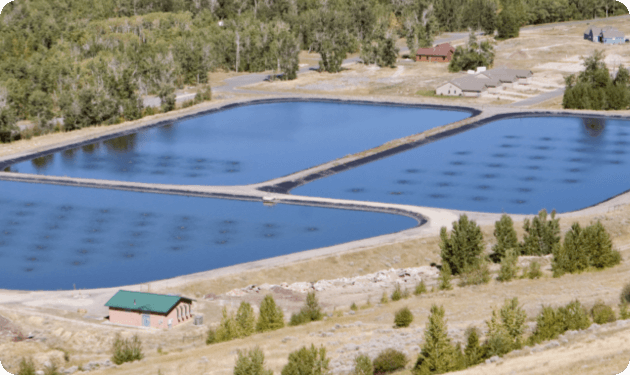The approach behind bacterial bioaugmentation is essentially based on the natural properties of the bacteria responsible for the treatment of wastewater or the degradation of organic compounds.
Exploiting their increased enzymatic capacities allows us to take advantage of the natural bacteria at an accelerated mode, generating very interesting operational and economical benefits.

The challenges of municipal wastewater
The accumulation of oil and grease (FOG) at lift stations and treatment plant is a common problem. Beside the soil bacteria carried into the sewer lines by infiltration, there are only few or no bacterial strains present in wastewater with the enzymatic capacity to degrade the FOG.
Download our Data sheet
Bio-STAR Munibac The addition of beneficial bacteria of Bio-STAR Munibac and Bio-STAR GB becomes therefore interesting for the maintenance of the sewer network, but also in terms of treatment efficiency at the plant. In fact, dosing Bio-STAR Munibac in the sewer network upstream of the treatment plant will significantly reduce the BOD, and thus generate economic benefits, including the rate of sludge generation. As for Bio-STAR GB, it will reduce the accumulation of FOG at lift stations. We also have a range of products for odor control.
Dredging accumulated sludge in lagoons constitutes a major financial challenge for many municipalities. 40 to 60% of this sludge is made up of undigested fibers by our body and toilet paper fibers. Bacteria of fecal origin do not produce the enzymes necessary to break down these fibers. On the other hand, those contained in Bio-STAR Munibac do so.
Furthermore, Bio-STAR MD+ is what you need for sludge already accumulated in lagoons. Denser than water, the Bio-STAR MD+ pellets sink to the bottom to release billions of natural bacteria which will degrade the organic fraction of the sludge. An annual Bio-STAR Munibac – Bio-STAR MD+ program has already enabled reductions in sludge volume ranging from 20 to 60%.
The other issue is the presence of ammonia (NH3) in the effluent. The thresholds at which the ammonia concentration becomes toxic are directly related to the pH and temperature of the water.
We have two options to biologically treat it: nitrifying bacteria of Bio-STAR Nitrobac+, through the nitrification process, or heterotrophic bacteria of Bio-STAR Industrie, through their strong metabolic assimilation process. We will guide you towards the proper biological product according to your plant conditions.
Very frequently, the calm conditions of the last aerated lagoon are conducive to the growth of algae and cyanobacteria, having then an impact on the pH. And the higher the pH, the more toxic the residual ammonia can become. The ultrasonic (resonance) technology of Pulsar® devices is the perfect tool to prevent it.
